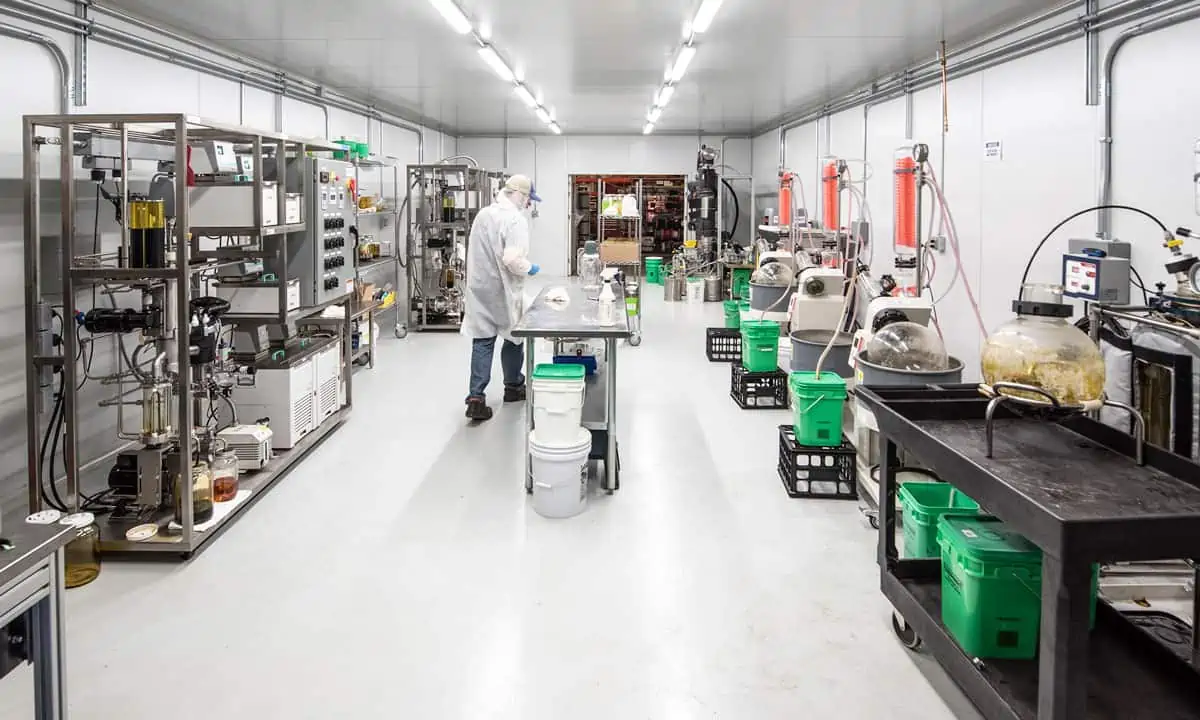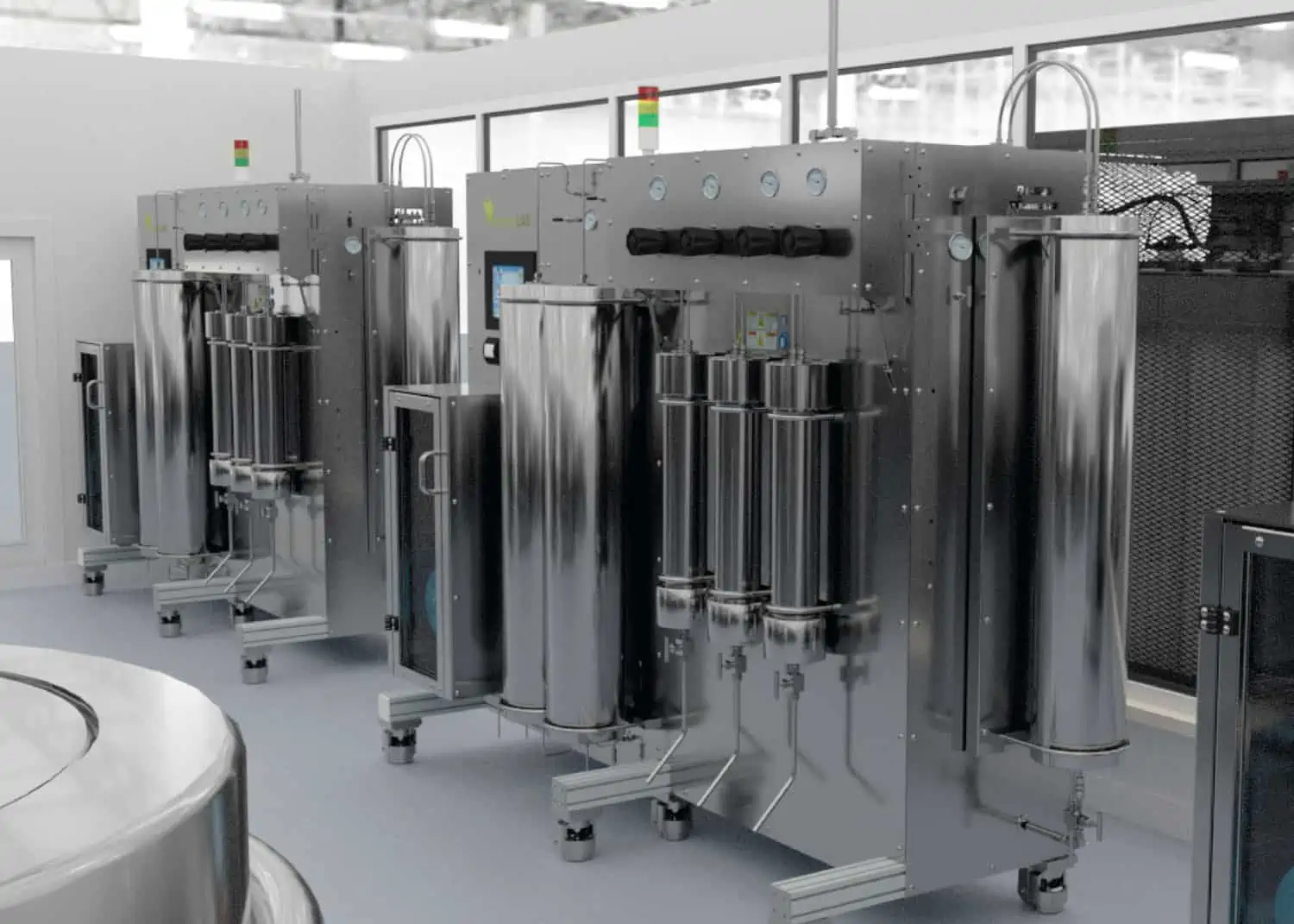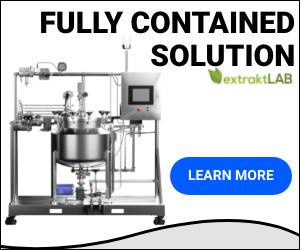Summary: Are you taking the first steps in creating your own hemp processing startup? Want to know some inside information from an expert in the field? In this article, extraktLAB founder and CEO, Dr. Jon Thompson, reveals seven important questions for any startup to consider when building their new project.
Starting a hemp processing business is a daunting task. There are so many different vendors, methods, and options to choose from that oftentimes the decision can be overwhelming. In this article, I will guide you through seven questions that I had to answer when we built a hemp processing facility that we currently use as a demo and research center for extraktLAB. I hope that my perspective will help you in your decision making.
People are Asking:
1. Where will my hemp processing facility be located?
2. Do I have the power required?
3. What does the permitting environment look like?
4. Do I have room to expand my operation for future demand?
5. Do I have enough space to place utilities?
6. What method of extraction will I be using?
7. What products do my customers want to purchase?
First, spend a few minutes answering these questions for yourself. When you have answered all seven questions, you will have taken the first step toward a successful operation. Then, review the answers with our expert applications specialists and they will listen to your answers and provide you additional information you need to get a business plan together.
Need a Checklist?
Here’s a startup specifications checklist to aid in your facility search. It contains additional items you should add to the list in this article.
1. Where will my hemp processing facility be located?
Location for a processing facility is an important consideration in the overall cost of your project. The location of the proposed facility will also have a significant impact on the timeline for permitting, build outs, power upgrades and final occupancy certifications.
Key considerations with locations are listed as follows:
A. Is the labor market strong in the location?
B. Is there plenty of industrial hemp being grown within 200 miles of your location?
C. Can you get a tractor-trailer delivery to the dock and utilities?
D. Is there plenty of parking for your employees and visitors?
E. Are there community restrictions?
F. Are you aware of the covenants and restrictions on your building?
Urban locations are definitely more expensive than suburban, or more rural manufacturing locations. Proper selection of the location will help you reduce costs, but needs to be balanced with convenience and availability of labor.
2. Do I have enough power at my location?
One important consideration when selecting your facility is to look at how much power is available. You will need to have plenty of power, not only for current operations, but also for the future. If there is not enough power, you need to make sure that you can obtain an upgrade to your power system.
We have worked with clients in the past who purchased a building that did not have enough power and were unable to upgrade the amount of power in their building. In one case, a client’s facility took them over a year to upgrade their power. So, it’s important that you understand how much power you are going to need at startup. We recommend a transformer with about 750 kilovolt amperes (kVA) as a starter package. You will need to upgrade that amount of power as you grow, but that should get you started.
Is your building located so far away from utilities that you need to spend a small fortune just to relocate those facilities to your building? We were involved in one processing facility that had to extend the main power line nearly one half mile. It really is necessary that you consider the costs of upgrading power.

3. What does the permitting environment look like?
The permitting environment of your location is a very important consideration when starting a hemp processing facility. Some jurisdictions apply national standards strictly and affect the driving up of start-up costs. In other jurisdictions, specific environmental regulations, covenants and restrictions on your building may severely limit your ability to place utilities, or even operate. It is extremely important that you examine those regulations prior to signing a lease or purchasing a building.
In addition, the jurisdictions that strictly apply national standards often delay the start-up of the operation significantly. So, it is really important when choosing a location that the permitting environment is not so restrictive that it will drive a huge amount of cost overruns in your project and delay your project completion.
4. Do I have room to grow?
Another important thing that you need to consider when purchasing or leasing a building is to anticipate your future growth. In order to do this, you are going to need to have a forecast and a business plan. The forecast will allow you to understand how large your operation will need to be today and five years from now.
You can make your forecast based on the number of units you expect to sell as a function of time. If you don’t know how to make a forecast, you can contact us and we can help you define your business model so that you are able to make such a forecast.
The forecast should drive your property plan, equipment plan, and your headcount plan. Once you know how large a facility will be in years two, three and four, you should be able to assess whether or not you have the right building for your growth.
As a rule of thumb, you’re going to need at least 20,000 square feet for five-tons per day of processing. You’re going to need room to store the biomass and you are also going to need room for packaging operations.
Once you have established your forecast, we are here ready to help you create a scaled property plant and equipment plan for your operation. We can also help you estimate the labor and overhead you should expect.
5. Do I have space to place utilities?
One key consideration for the location of your hemp processing facility is whether you have enough room to place utilities. You are going to need chillers that are typically located outdoors and you are going to need room for other utilities such as CO2, and outdoor solvent storage.
The CO2 bulk tank for and chillers are typically installed on a cement pad that is preferably located near the processes using the CO2. The CO2 tank itself needs to be accessible to a semi truck if it is a large holding tank greater than 24 tons. Micro bulk tanks do not typically need to be located close to where they are filled. A long hose can fill those as long as they are located within a hundred feet of the delivery truck.
Calculate Your Botanical Extraction Business Operating Cost
Starting a Hemp Extraction Business? Check out our Calculators and to analyse costs, estimated revenue, yield, initial investments and important metrics for your extraction business.
6. What extraction method will I be using?
When I first started to build out extraction facilities, we looked at both ethanol and CO2 as primary solvents for extraction. Since we were involved in building and working towards GMP certification, it was important to us that we create and extract clinical grade CBD oils. Clinical grade oils do not carry any risk for residual chemicals that would come from ethanol. That is why we chose supercritical CO2 extraction as a preferred method for extracting hemp.
The second reason why we chose CO2 extraction over ethanol extraction had to do with cost. Ethanol extracts cost much more to produce than CO2 extracts. If you want to learn more about this, please contact our application specialist for calculators.
The second criteria for clinical grade oils is an organic certification. Organic certification comes from the USDA and if you are able to build your facility and your processes to accommodate organic manufacturing, it is in your best interest to do so. It’s not that you can’t accomplish organic certification with ethanol extraction, it is just going to cost you a whole lot more. Organic ethanol is extremely expensive.
The third criteria for clinical grade oils has to do with consistency, purity, and potency. As an analytical chemist, I wanted to make sure we had the most pure extracts for our customers. My reasoning was that if a solvent-based extract such as ethanol extract was not good for inhalation, by extension it was not good for ingestion either. It makes sense to invest in technologies that will give the purest extract. CO2 extraction is a great way to accomplish this.
Know your regulations
Whatever extraction method you decide to use in your facility, it is important that you know all of the criteria needed to build for that method. For example, ethanol extraction facilities typically have a H2 occupancy versus CO2 facilities that carry a F2 occupancy. H2 occupancy is a special designation for facilities that have large amounts of solvent and flammable liquids. They might also have special requirements in those buildings for deflagration systems and exhaust.
F2 occupancy is light industrial occupancy and does not have these added requirements. That is why CO2 extraction facilities often are much less expensive compared to ethanol extraction facilities in general.
We have seen many operators try to get around costly occupancy requirements by storing their flammable materials outdoors. This will need to be cleared with both insurance and fire marshal prior to operation of the facility.
One other key consideration when selecting your type of extraction method is your ability to get insurance. Insurance companies generally frown on storing and using large amounts of flammable materials as they carry a higher risk for a catastrophic event. In fact, many ethanol facilities find it hard to obtain any insurance without complete compliance with NFPA standards.
One valuable service that we offer is a hazardous materials assessment. This focuses on storage and inventory of materials in each room used by each process. We provide calculations for the amount of exhaust needed in each room to keep the amount of solvent in the air under 25% of the lower explosive limit. This is a requirement from the NFPA for use and storage of solvents that are flammable.
We have certified fire inspectors on staff that allow us to help our customers navigate the NFPA standards and also choose processes that are low cost. We also provide standard operating procedures for hazardous materials as a part of our GMP package.
Need a Checklist?
Here’s a startup specifications checklist to aid in your facility search. It contains additional items you should add to the list in this article.
7. What products do my customers want to purchase?
Some would argue that this is the most important question to answer before getting started: What do my customers want? How much are they going to purchase? And when will I need to get those products to them?.
One of the key characteristics of the market is that the popularity of products change rapidly. So, the products that you may think are hot early on in your business plan may not be so popular in a year or so. It’s important that you keep your business plan flexible enough so that you can create products that consumers want. This is applicable to the bulk business as much as it is to the consumer products category.
I think it’s also important that you talk about the nature of the market to your investors so that they are aware that you may need to adjust your products based on trends. The trend cycle in my experience is on the order of one year.
When building business plans, I would start out by understanding which products are in greatest demand. Do not build a business plan on products that have a very low demand associated with them or are considered boutique. Boutique products that cater to classes of consumers rather than masses of consumers will always lag in the market compared to high volume product categories. CO2 vapor pens, for example, is a very large target category. Edibles are also a huge category in the hemp market.
There are many questions that you need to ask when starting a new business or even upgrading your facility to accommodate more production. Since 2014, we have been heavily involved in putting hundreds of hemp manufacturers in the business of extracting hemp and creating valuable products that consumers will buy. We have done this in North America including Canada and in Europe as well. We would be honored to work with you to help define your plan, get you some budgetary numbers, and define an equipment schedule. We also deliver and install that equipment, train your staff on GMP and process, commission your facility, and provide software that will help you run your business.
We are looking forward to your phone call.
Dr. Jon Thompson
Download the Hemp Processing Building & Site Guidelines Checklist to get a head start for the information you need to be gathering.
Site Specifications Guidelines
Building Specifications Guidelines
Utilities Guidelines & more
Frequently Asked Questions
What is the solvent loss for ethanol extraction?
Hemp and cannabis biomass is an extremely absorbent material. As a consequence, a large amount of solvent volume must be added to the biomass to first solvate the biomass and then fluidize it. For ethanol extraction, approximately one gallon of ethanol is required to extract 1 lb of hemp. Solvent loss comes from the incomplete recovery of that solvent from the hemp.
The following table details the estimated solvent loss from ethanol extraction as a function of volume of hemp processed:
| Lbs processed per day | Daily requirement of
ethanol (gallons) |
Daily Loss of ethanol (gallons) at 90% recovery of ethanol | Max Cost of Solvent Loss per day:
$16-30/gal food grade ethanol $6-8/ gal denatured Calculated at $30/gal |
| 500 | 500-1500 | 50-150 | $1,500-45,000 |
| 1000 | 1000-3000 | 100-300 | $3,000-9,000 |
| 2000 | 2000-6000 | 200-600 | $6000-18,000 |
| 10000 | 10000-30000 | 1000-3000 | $30,000-90,000 |
Another source of solvent loss is incomplete recovery of solvent from the CBD hemp oil.
How many times can I recycle or reuse ethanol from an ethanol extractor?
In guidance published by the FDA in 2010, plans for the reuse of solvents must be accompanied by a Declaration of the maximum number of times the solvent can be reused.
the FDA has recognized that contaminants buildup in the solvent over time as they are recovered and reused
As a consequence, the FDA guidelines recommend that the solvents be brought back to a suitable state before Reuse. A suitable reuse is defined by the original specifications for the solvent that is being used.
In keeping with a risk-based approach to process validation, the key risk to address with solvent reuse is cross-contamination. Cross-contamination could happen when a solvent dissolves a low level contaminant from the biomass being extracted. As the solvent is removed, the contaminant can become magnified and concentrated in either the oil or the solvent during solvent recovery. Cross contamination then occurs when a contaminated solvent is used to extract a non contaminated batch.
Contaminants are typically identified during incoming inspection but may show up later during processing as the oil becomes more refined. Hemp is typically sampled at receiving by quality assurance and a series of tests are conducted on the Hemp biomass in order to determine if the incoming material is contaminated with pesticides, solvents, heavy metals or if it has significant microbial content. Contaminants that are identified in the quality inspection should be tested for build up in the extraction solvent during validation.
Other sources for contamination include carbon black or activated carbon that is typically used in ethanol extraction to remove chlorophyll from the ethanol. Combustion byproducts that are incorporated into the structure of carbon black can dissolve in the ethanol and contaminate.
According to FDA guidelines, the number of times ethanol solvent can be reused must be validated according to a validation protocol. Once the method and process has been validated, the requirements for testing each reuse batch may not be required depending on the risks identified during the validation study.
As a general rule of thumb, a solvent may be reused successfully 20-50 times. Whatever your company’s current practice is, it is important to define the process, validate the process, establish specifications for reuse, and also set up a testing program to measure for contaminants. In all likelihood, a solvent changeover is probably in your future and it’s cost should not be neglected in your overall operating cost model. It is easy to estimate the cost of solving change over as it is the same as the start-up cost:
| Lbs processed per day | Daily requirement of
ethanol (gallons) |
Cost per gallon:
$16-30/gal food grade $6-8/ gal denatured Calculated at $30/gal |
| 500 | 500-1500 | $15,000-45,000 |
| 1000 | 1000-3000 | $30,000-90,000 |
| 2000 | 2000-6000 | $60,000-180,000 |
| 10000 | 10000-30000 | $300,000-900,000 |
The solvent changeover cost on a 60 day change over cycle can then be estimated on a per year basis according to the following table:
| Lbs processed per day | Change Over Frequency | Cost of Changeover | Max Annual Cost |
| 500 | 60 days | $15,000-45,000 | $270,000 |
| 1000 | 60 days | $30,000-90,000 | $540,000 |
| 2000 | 60 days | $60,000-180,000 | $1,080,000 |
| 10000 | 60 days | $300,000-900,000 | $5,400,000 |
By extension, the solvent testing costs will also be important to address:
| Lbs processed per day | Change Over Frequency | Cost of Testing
(pesticides, solvents), Unknowns testing can be 5-10k USD per unknown. |
Max Annual Cost |
| 500 | 60 days | $200-400 | $2400 |
| 1000 | 60 days | $200-400 | $2400 |
| 2000 | 60 days | $200-400 | $2400 |
| 10000 | 60 days | $200-400 | $2400 |
It is important to insist that unknowns be flagged by your laboratory.
What is supercritical CO2 extraction?
Supercritical CO2 extraction is used in hemp processing in hemp extraction for extracting CBD oil from hemp biomass. You can also be used to extract any Botanical oil from any plant material.
The co2 extraction typically takes place above the supercritical pressure and temperature for CO2. Is 1,070 PSI and 31 degrees Celsius.
Under supercritical conditions, the CO2 behaves much like hexane in terms of its solubility selectivity.
Does ethanol extraction have a greater throughput than CO2 extraction?
Hemp processing equipment can be scaled for 1 to 5 tons of extracted hemp per day. It’s generally not a fair comparison to compare the throughput on an instrument from two different companies. What is fair is to specify the throughput At the tonnage process per day and then look at the operating cost for that process. You can also look at the equipment and Facilities cost to accommodate that level of Production. after you have all of your costs accounted for including the hidden costs, then you can calculate the net present value for each investment.
How much hemp can be processed per day with CO2 extraction?
CO2 extraction facilities have been scaled to do hundreds of tons per day of biomass extractions. These facilities are very safe compared to the equivalent extraction facilities that use Flammable solvents.
In Terms of extraction facilities for processing hemp, we have built facilities that will process 5 tons of hemp biomass per day in a safe, low cost, low energy, small footprint operation.
Does it cost less to process hemp with Co2 compared with Ethanol?
Yes.
In fact the operating cost for CO2 extraction is dramatically less than the operating costs associated with ethanol.
Extraction with Ethanol is a process that is typically run at low temperatures. First the ethanol is cooled to below -20oC before it is introduced to the hemp. Cooling the ethanol reduces the amount of extracted chlorophyll and waxes. If you account for the energy required to chill the ethanol down to those low temperatures and then also evaporate after use, the energy bill for extracting ethanol is approximately 3-6x the cost of extracting with CO2. However, the energy cost is really not the key driver in the overall operating costs.
Ethanol extraction requires a significant amount of ethanol to be used per pound of hemp. In fact, about 1 to 1.5 gallons of ethanol must be used per pound of dry hemp in order to extract. Hemp is a very absorbent biomass material and the ethanol must fully saturate the hemp plant before any extraction can take place. For this reason a large volume of ethanol is needed to extract cbd from hemp.
The key cost driver or ethanol extraction is recovery of that solvent from the biomass. Even though many ethanol extraction equipment companies provide centrifuges and or presses to eliminate the amount of ethanol left over in the biomass, The best equipment will provide only a 90 to 95% recovery of the ethanol. This 5 to 10% loss in ethanol is a huge cost driver for extracting ethanol.
For example, suppose you wanted to process 1000 lb of hemp. You would need 1000 gallons of ethanol to start out at a cost of $16-33 per gallon for food grade ethanol for a total cost of $16,000 to $33,000. If you recovered 90% of the ethanol the ethanol loss would be $1,600 – $3,300 per 1000 lbs. Furthermore if you process 1000 pounds per day, this would be your daily loss.
In contrast, you will lose the equivalent of about $70 per day for CO2 extractions for the exact same process.
Besides energy and solvent usage, there are many other hidden costs related to extraction with ethanol including solvent reuse costs, insurance cost, increased facilities cost, and testing costs.
What is the highest yield you can expect from hemp extraction?
Industrial Hemp extraction typically has a CBD content of 5 to 15% by weight. The THC content of the Industrial Hemp is required by law to be less than 0.3% by weight in the flower that is sold.
Does raw hemp moisture affect yield?
Yes, moisture content will affect weight yield. For example, if 10% of the hemp To be extracted was water, and that water was removed during CO2 extraction, the denominator would be larger in the yield calculation, thereby giving a smaller yield number. By extension, if the same hemp was extracted but had zero water in the hemp, the overall weight percent yield of the extract would be a greater percent of the weight.
One thing to note is that in ethanol extraction, water that is in the hemp will dissolve into the ethanol. If the ethanol is removed from the CBD oil with a falling film evaporator, some of the water will be Co evaporated with the ethanol, thereby increasing the amount of water in the ethanol for each extraction cycle. Some of the water will stay in the extract and is typically removed in a secondary stirred reactor before wiped film evaporator and distillation.
Do you offer training on hemp processing and hemp extraction?
We Have taught hundreds of customers how to extract CBD oils from hemp and THC oils from cannabis. Our training package typically includes installation of the equipment, standard operating procedures, commissioning of the equipment in the facility, and training of operators on the procedures that are provided.
We also offer advanced training and quality management system implementation services for those companies who wish to achieve GMP certification.This training dresses all aspects of the quality management system, laboratory information management, batch record system, and Manufacturing execution.
What kind of employees do you need for hemp processing or hemp extraction?
There are basically four different employees that you need to have in order to run a hemp processing or hemp extraction facility. These are as follows:
- assurance
- Shift manager
- Operators
- Optionally analytical operators.
If your goal is to produce a quality product that complies with GMP requirements, you are going to need to have staff that can help you comply with those requirements.That typically means you need to have a quality assurance manager that is aware of the requirements And can Implement those requirements in your facility.
It is also necessary that you have a shift manager. This is someone who is organized and can schedule operators at each station and track the production output. This person will also ensure that operator training has occurred, ensure that yields are met, and also manage the workforce. They are also responsible for producing products that can form with the quality requirements of the end product.
Operators typically execute on the production plan by following standard operating procedures. They are typically trained on how to use the equipment and how to move materials in and out of the process. It is their job to record the data for the quality management system. The Operators typically will be successful if they are Hands-On and are able to follow instructions. It is also a big Advantage if the operator can conduct basic maintenance on the equipment. This requires someone who is Hands-On and has the physical strength to do simple maintenance tasks. This is important for the proper running in the efficiency of a hemp processing facility.
Last but not least, analytical operators or quality control technicians are important for providing yield and in-process testing to the manufacturing facility. They will work with quality assurance directly to ensure that incoming raw hemp biomass conforms to purchasing specifications and to Quality specifications. Quality control technicians are typically chemists and have a laboratory background.



